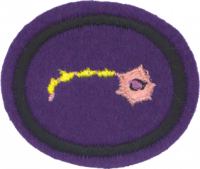AY Honor Brain and Behavior Requirements
1. Be able to label a diagram or a model of a human brain including the following parts and tell briefly what each part does: medulla, pons, cerebellum, midbrain, thalamus, pituitary gland, and cerebrum.
2. What is a neuron? Draw a picture of a typical neuron and label its parts. Where does information enter a neuron and where does information leave from?
3. Explain how drugs affect the function of neurons especially at the 'synapse'. Make a commitment never to take drugs except for medical reasons.
4. What is a reflex? Perform a knee-jerk reflex test on someone. (Instructions: Gently tap someone just below the knee-cap while the person's leg is hanging over the edge of a chair.) Explain why it occurs (use the following terms in your answer: sensory neuron, motor neuron, spinal cord). Why do doctors use this test in a physical exam?
5. What is a sensory neuron, and what is "adaptation". Demonstrate adaption by doing the following:
- a. Rest your arm on a table and then place a small cork (or something very light) on your arm.
- b. Place one finger of one hand in a bowl of cool water and another finger of the other hand into a bowl of warm water.
- c. What spiritual lesson can be drawn from the concept of adaption?
6. How are the senses of taste and smell similar and how are they different. Draw a map of which part of the tongue responds to the following tastes: sweet, sour, bitter, salt. Instructions: Have someone dip a Q-tip into one of the following: sugar water (for sweet), lemon juice (for sour), flat tonic water (bitter) or salty water (salt), and then lightly touch different parts of your tongue. Notice which areas of the tongue taste the solution that is being tested. Rinse with pure water between each test and use a new Q-tip for each test.
7. Draw a picture of the various parts of the eye and explain why you have a blind-spot. Find your blind-spot for one eye. Instructions: Place a very small black dot on the center of a white piece of paper. Close one eye and stare directly ahead. Hold the paper at arms length in front of you and move the paper until the spot "disappears" (usually this is occurs when the dot is just a bit below eye level - it is important).
8. Describe the three basic parts of the ear and tell what each part does. Explain why the following activities can be bad for your hearing:
- a. Listening to a "Walkman"
- b. Putting something long in your ear
- c. Being in the front row at a loud music concert
- d. Not treating an ear infection properly
- e. Standing behind a jet at an airport
9. Do one or more of the following activities: (some of these activities will need to be planned with a medical/dental professional or at a local college or university— they are usually very willing to assist you)
- a. Observe an electroencephalogram or one being performed on someone and describe what can be learned from this test.
- b. Watch a "lie-detector" test being performed. Briefly explain how one works.
- c. Observe an MRI or one being performed and explain what information can be learned from such a test.
- d. Observe a neuron under a microscope.
- e. Observe someone receiving a local or general anesthetic and explain how an anesthetic works.
- f. Observe a real human brain (fresh or preserved)
10. List at least 5 things that you can do to protect your brain from damage.
11. Do one of the following:
- a. Visit and help care for someone (minimum of 2 hrs) who has a disease of the brain and report on their special needs.
- b. Briefly describe the following disorders of the nervous system:
- i. Alzheimer's Disease
- ii. Multiple Sclerosis
- iii. Epilepsy
- iv. Major Depression
- v. Down Syndrome
- vi. Huntington's Disease
- vii. Quadriplegic
- viii. Paraplegic
12. Find at least three references from the Bible that refer to your brain and/or to decisions that you make in life.


